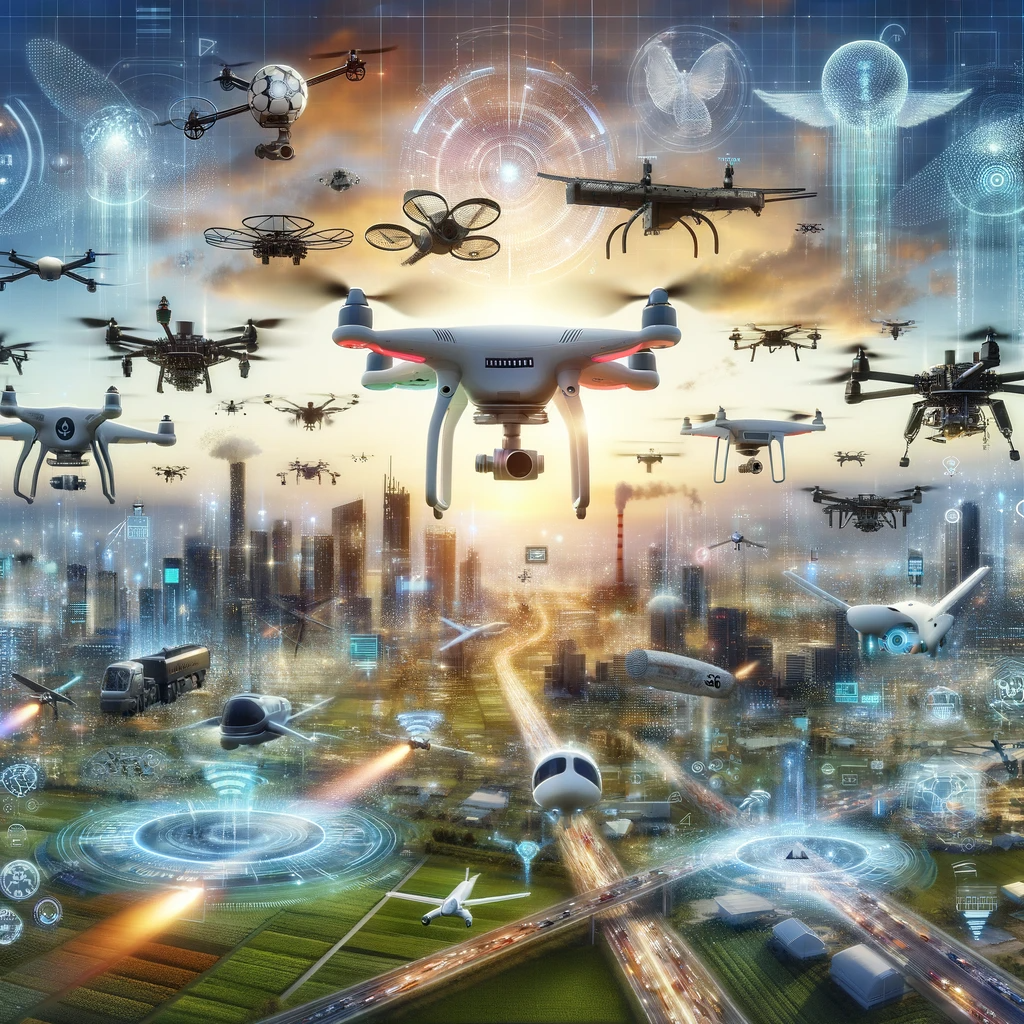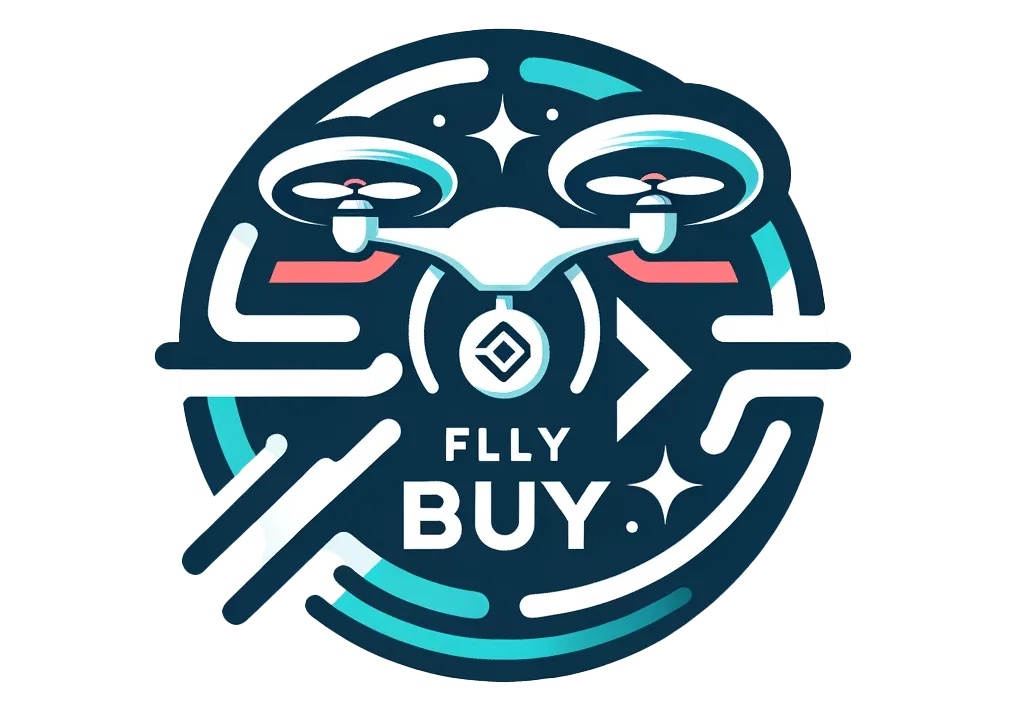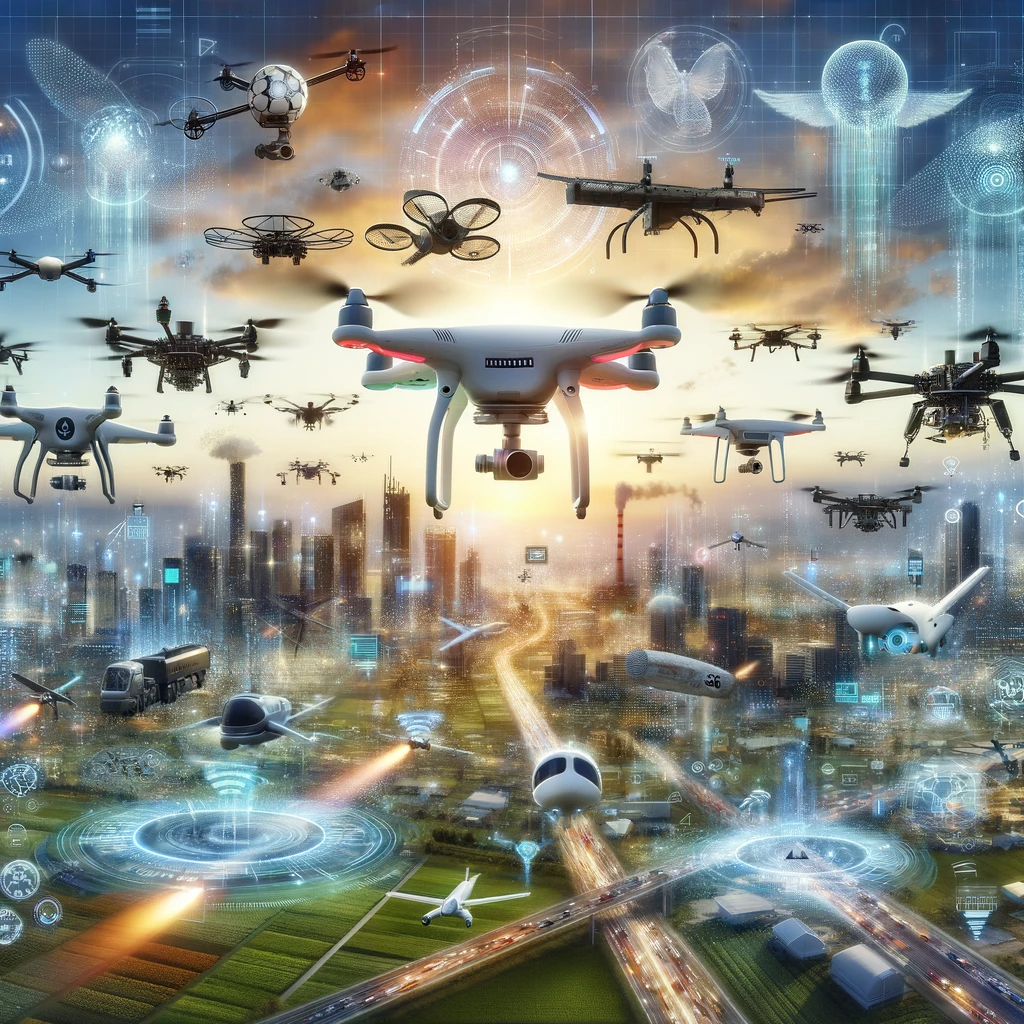
The drone technology landscape is poised for significant advancements in 2024, driven by rapid 5g technological evolution, changing government regulations, and shifting market dynamics. Here are key trends and predictions for drone technology in 2024:
- Drone Swarms and AI Integration: The integration of Artificial Intelligence (AI) with drone technology is expected to advance significantly, leading to the development of drone swarms. These swarms, composed of multiple drones working in coordination, will find applications in areas such as agriculture, delivery services, and defense. The use of AI will enable these drones to perform complex tasks more efficiently and autonomously.
- Enhanced Connectivity with 5G: The adoption of 5G technology in drones will facilitate real-time data transmission, enhancing the capabilities of drones in various sectors. This includes applications in emergency response, traffic management, and more, where immediate data transmission is crucial.
- Improvements in Battery Life and Operation: Drones are likely to see advancements in battery technology, allowing for longer flight times. Additionally, user interfaces are expected to become more intuitive, lowering the barriers to entry and making drones more accessible for various applications.
- Market Dynamics: The global drone manufacturing landscape is expected to change, with countries like Ukraine, India, and the US making significant investments and emerging as key players. This shift is partly driven by geopolitical events and a push for diversified supply chains.
- Regulatory Developments: The implementation of Remote ID in drone legislation will be a major change, requiring drones to transmit identification and location data. This will impact drone operations and address privacy concerns. Additionally, new legislation in the US and other countries will likely standardize drone operations and counter-drone measures, focusing on national security and public safety.
- Drone Applications in Urban and Sensitive Areas: Drones will increasingly be used in urban environments for various applications, including delivery services, aerial surveillance, and emergency medical supplies transport. Anti-drone systems will become crucial in these settings to protect against unauthorized drone activities. Airports, government buildings, and other sensitive locations will see standardization in anti-drone measures focusing on early detection and neutralization of threats.
- Consolidation and Collaboration in the Anti-Drone Industry: The anti-drone industry will undergo consolidation, with collaborative efforts among industry leaders, regulatory bodies, and innovators. This will drive the development of standards and protocols that balance safety, privacy, and innovation.
As drone technology continues to evolve, these trends indicate a future where drones become an integral part of various sectors, enhancing efficiency, safety, and accessibility. However, alongside these advancements, the importance of responsible use, regulatory compliance, and addressing privacy and security concerns will be paramount

